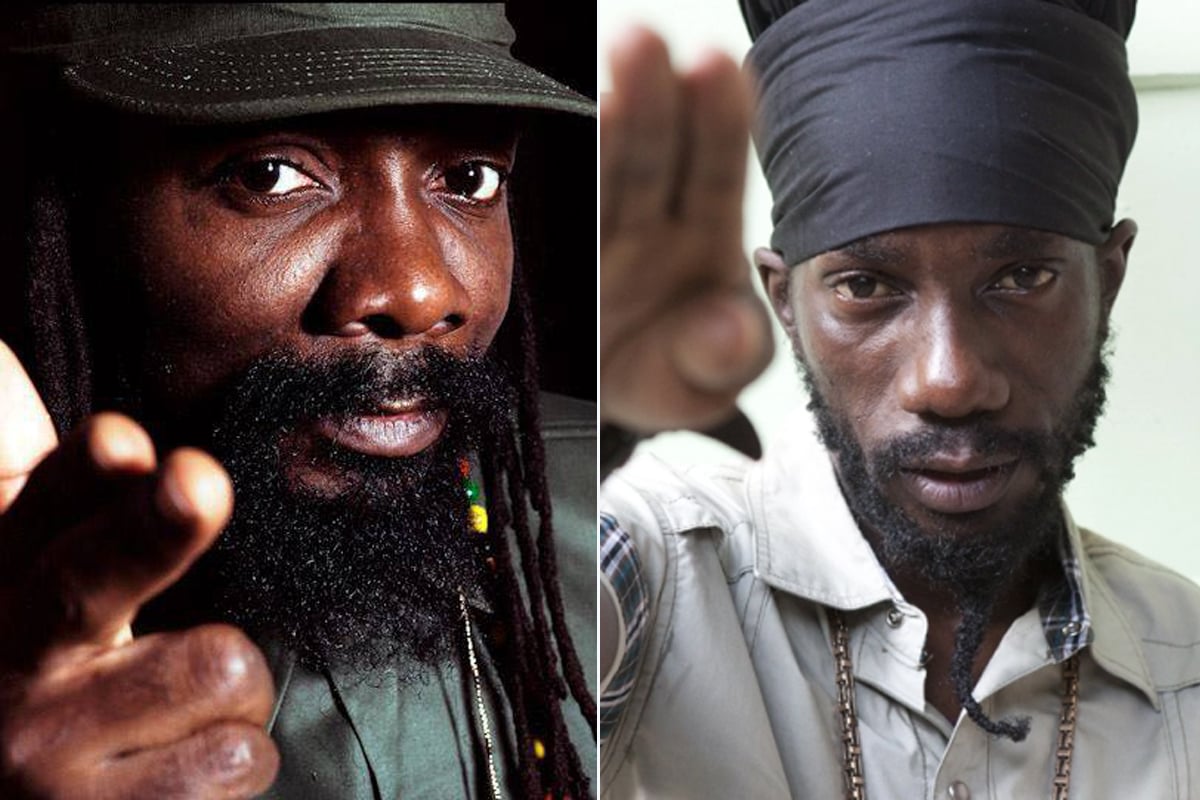Veteran Singer Louie Culture Loaned Sizzla A Car To Help His Career

It’s commonplace for veteran artistes to mention unity as the key to elevating Jamaican popular music, but a real-life example by toaster Louie Culture takes the idea of unification to a whole other level.
In a recent online chat with producer DJ Kool Face, the singjay recalled meeting a young Sizzla Kalonji from August Town, St Andrew, and recognizing his musical genius.
Louie Culture told Xterminator producer Philip ‘Fatis’ Burrell about the aspiring star, but said Burrell was focused on another project at the time. The Gangalee entertainer didn’t stop there, and brought Kalonji to Star Trail Records where he recorded the timeless track Holding Firm for producer Richard Bell.
Still determined to get Kalonji more opportunities, Louie Culture went to late producer Bobby Digital in 1997.
“Mi seh ‘Bobby dah likkle youth yah bad mi waan yuh voice him,'” he recalled. “Bobby a seh ‘Culture yuh know seh mi nuh voice young artistes cause young artistes don’t know di business… dem will hear dem tune a play and think a bag a money a mek and waan bring badness…’ Mi a seh ‘Bobby a my artiste dis, a young artiste but is a young veteran, voice him.’ Bobby go round, go round and seh a me him waan voice on the (Drum Song) rhythm.”
He recorded Fire Bun and pressed Digital to give Sizzla a chance until he gave in. The result was Sizzla’s Mek It Secure.
“A one tek Sizzla tek dat song wid… Bobby never haffi do nothing more wid di song. Bobby call mi di night and seh ‘Yow, dah likkle youth yah song a ring inna mi ears enuh.’ Mi seh ‘Alright mi a go bring him forward.'”
He took Kalonji to the studio the following day where they recorded more music, and Louie Culture told him that he shouldn’t have any issues getting access to the studio moving forward as he had made a great impression. But Kalonji didn’t have a vehicle to go on his own.
“Dem time deh mi have two vehicle but mi did a go a foreign,” Louie Culture said. “Mi seh ‘Yuh can drive?’ and him seh ‘Yeah man.’ Mi seh ‘Yuh have license?’ and him seh ‘No.’ Dem time deh mi have a red Starlet mark ‘Gangalee’ pon it so every police, everybody know it, dem nuh really stop it cause dem know my vehicle straight.
“Mi seh ‘My youth, police nuh really stop my vehicle enuh. Mi nuh know how yaa go manage but mi a go run di risk left it give yuh so all yuh haffi do, just know seh yuh drive from yuh yard to Bobby studio and back home.’ Mi see it inna di youth seh all him need is a push.”
By the time he returned to Jamaica three weeks later, Kalonji had made good on the investment by recording an entire album (Black Woman & Child) for Digital.
“Bobby seh ‘A years mi deh round artistes, Shabba Rankin a my baddest artiste and the biggest artiste but me a tell yuh, me never see a artiste like this youth name Sizzla.’“
Louie Culture said without the practise of “each one, help one,” the local music industry will suffer. After all, it was selector Alonzo Hawk who first brought him to a studio.
“In the 90s when we and (Terror) Fabulous and man like Jigsy King and Daddy Screw, if you go in a studio and see an artiste voicing a song and more time it’s just a one line a give an artiste a problem, we as the artiste would say, ‘Put dis in deh, try dis’ and him just bup and it work,” he said. “Nowadays it’s different. Most man when dem a go studio certain man cannot come in there or if certain man deh pon di rhythm him nah go pon di rhythm so me nuh know weh dah badmind deh come from inna di business but inna our days it’s a unity.”
